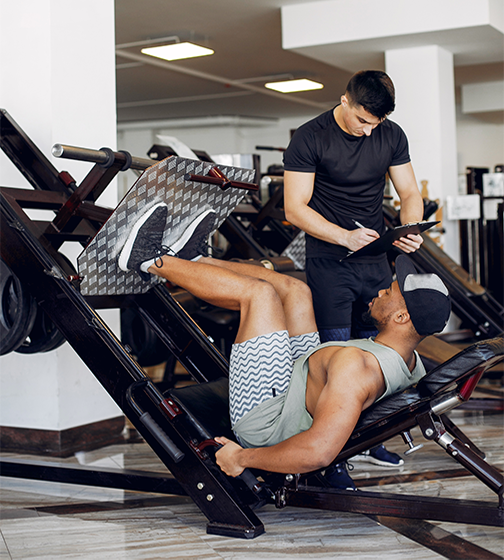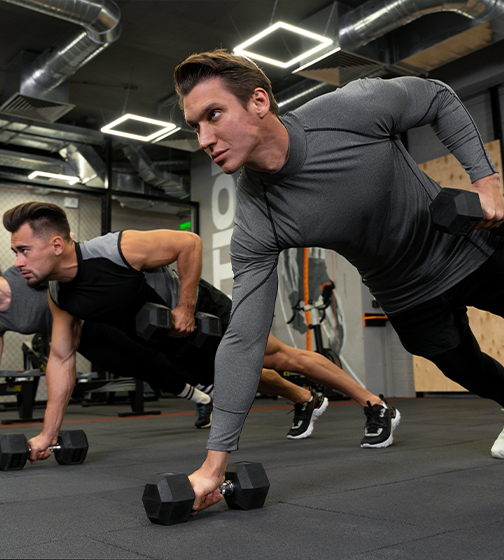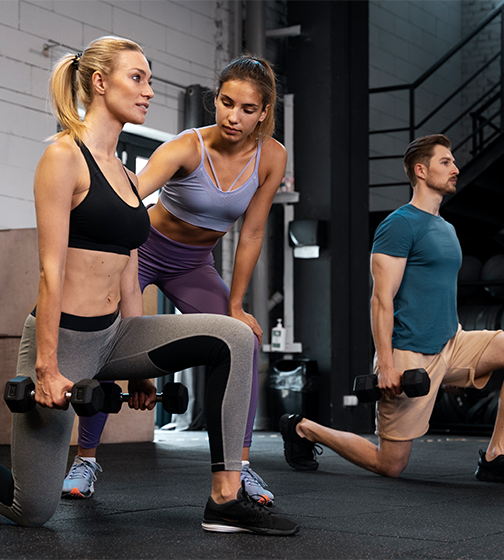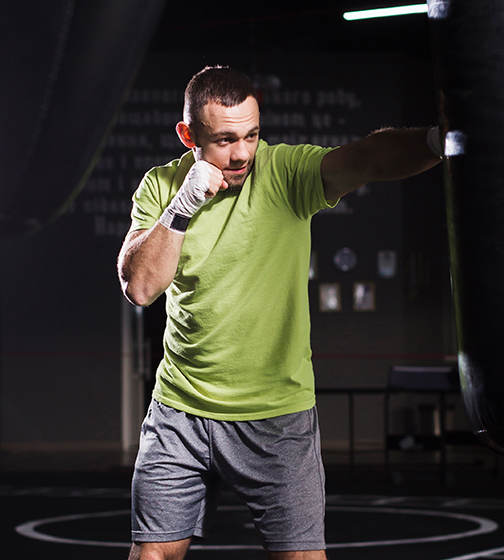
CARDIOVASCULAR TRAINING
Cardiovascular Training in the gym, also known as cardio, is a vital component of any fitness routine. It focuses on elevating your heart rate and improving your cardiovascular health, leading to increased endurance and stamina. Whether you're aiming to shed extra pounds, boost your overall fitness level, or reduce stress, cardiovascular exercises have numerous benefits. At the gym, you'll find various cardio machines and exercises to choose from. Treadmills, stationary bikes, ellipticals, and rowing machines are popular options that cater to different preferences and fitness levels. Group classes like spinning, aerobics, and dance workouts also offer a fun and engaging way to get your heart pumping. Cardiovascular Training not only burns calories but also strengthens your heart, lungs, and circulatory system. Regular cardio sessions can improve blood flow, reduce the risk of chronic illnesses, and enhance your energy levels for everyday activities. Whether you're a beginner or a seasoned gym-goer, incorporating cardiovascular training into your fitness routine will contribute significantly to your overall well-being and fitness goals.
FUNCTIONAL TRAINING
Functional training in the gym is a dynamic and purpose-driven approach to fitness that focuses on improving the body's ability to perform real-life activities and movements. Unlike traditional exercises that isolate individual muscles, functional training emphasizes movements that engage multiple muscle groups simultaneously. The philosophy behind functional training is to enhance strength, balance, flexibility, and coordination in a way that directly translates to everyday activities and sports performance. Exercises often mimic movements used in daily life, such as squatting, lifting, pushing, pulling, and rotating. This not only improves overall fitness but also enhances the body's functional capabilities, making it more efficient and resilient in various situations. Functional training utilizes a wide range of equipment, including stability balls, resistance bands, kettlebells, medicine balls, and TRX suspension trainers, among others. These tools add instability to the exercises, forcing the body to engage stabilizing muscles and promoting better overall body control. Moreover, functional training is highly adaptable to different fitness levels and goals. Athletes can use it to improve sports-specific performance, while seniors can enhance balance and mobility to maintain independence in daily activities.


STRENGTH TRAINING
Strength training in the gym is a fundamental and transformative approach to enhancing physical fitness and overall health. It revolves around resistance exercises that target specific muscle groups, stimulating muscle growth and strength development. The foundation of strength training lies in progressive overload, where the resistance is gradually increased over time, challenging the muscles to adapt and grow stronger. This can be achieved through various equipment like free weights, machines, resistance bands, or bodyweight exercises. One of the primary benefits of strength training is the significant increase in muscular strength and power. As the muscles adapt and become more robust, individuals can perform everyday activities with greater ease and efficiency, reducing the risk of injury. Strength training is not exclusive to bodybuilders or athletes; it is beneficial for people of all ages and fitness levels. Regular strength training can enhance bone density, joint health, and overall functional ability, which is particularly crucial as we age.
PERSONAL TRAINING
"Personal training in the gym" is a specialized and highly effective approach to achieving fitness goals. It involves one-on-one coaching with a certified fitness professional who tailors workout plans and provides personalized guidance to meet individual needs. With personal training, clients embark on a transformative fitness journey backed by expertise and accountability. The process begins with a thorough assessment of the client's fitness level, health history, and specific objectives. Based on this information, the trainer designs a customized workout program that addresses strengths, weaknesses, and aspirations. During training sessions, the personal trainer offers hands-on instruction, ensuring proper form and technique to maximize results and prevent injuries. They also provide continuous motivation and support, pushing clients beyond their comfort zones and unlocking their full potential. Personal training is suitable for various fitness goals, whether it's weight loss, muscle building, flexibility enhancement, or overall health improvement. The program evolves as clients progress, keeping the workouts challenging and engaging.


MIXED MARTIAL ARTS
"Mixed Partial Arts in the gym" is a novel and intriguing concept that brings a refreshing twist to traditional fitness routines. Combining elements of humor and versatility, it encourages gym-goers to embrace a diverse range of exercise modalities and workout styles. In this unique fitness approach, participants experience a playful fusion of various fitness disciplines, including yoga, aerobics, strength training, dance, martial arts, and more. The goal is not to become a master in any single domain, but rather to enjoy the process of exploration and experimentation. It caters to individuals who crave variety and seek to break away from monotonous workout regimens. Imagine starting a session with energetic Zumba moves, seamlessly transitioning into bodyweight exercises inspired by calisthenics, then blending in the flexibility and balance of yoga, and finally, ending with striking techniques borrowed from martial arts. Apart from the physical benefits, this approach also nurtures mental agility and creativity. By embracing a "mix and match" philosophy, participants learn to adapt to new challenges, becoming more adaptable and open-minded in their fitness journey.